Do you have a question about the Roland AE-10 and is the answer not in the manual?
Details on the Aerophone's dedicated mouthpiece, including maintenance advice.
Describes keys for performance, allowing saxophone-like fingering.
Controls the octave range, operated by the left-hand thumb.
Turns the unit on/off; features an automatic power-off function.
Accesses the sound selection screen and can recall user tones.
Attachment point for a neck strap for secure instrument handling.
Connects the included AC adaptor for continuous power.
For connecting to a computer to transfer USB MIDI data.
Connects an external audio player to play along with music.
Connects to external speakers or headphones for audio output.
Instructions on proper posture and grip for playing.
Guidance on mouthpiece placement and blowing for expressive sound.
Using keys for playing notes and accessing advanced techniques.
Techniques for producing higher-pitched notes using special fingerings.
Explains operation of thumb hook, octave keys, and thumb controller.
Provides quick methods to select tone numbers using specific button combinations.
Enables fast access to saved user tones via performance keys.
Procedure to save custom tone settings as a user tone.
Sets the overall volume level for internal speakers and headphone output.
Adjusts the instrument's tuning frequency, typically A=440.0 Hz.
Configures how breath force influences sound response.
Controls the depth of the reverb effect, simulating concert hall acoustics.
Configures the octave keys to function as ±2 or ±3 octaves.
Allows customization of note fingerings and octave shift settings.
Sets the minimum breath strength required to trigger sound.
Adjusts the normal state of the bite sensor for proper pitch control.
Specifies the MIDI channel for transmitting data.
Returns the unit to its original factory default settings.
Lists key technical details, dimensions, weight, and included accessories.
Covers essential safety warnings, precautions, and repair information.
Details on the Aerophone's dedicated mouthpiece, including maintenance advice.
Describes keys for performance, allowing saxophone-like fingering.
Controls the octave range, operated by the left-hand thumb.
Turns the unit on/off; features an automatic power-off function.
Accesses the sound selection screen and can recall user tones.
Attachment point for a neck strap for secure instrument handling.
Connects the included AC adaptor for continuous power.
For connecting to a computer to transfer USB MIDI data.
Connects an external audio player to play along with music.
Connects to external speakers or headphones for audio output.
Instructions on proper posture and grip for playing.
Guidance on mouthpiece placement and blowing for expressive sound.
Using keys for playing notes and accessing advanced techniques.
Techniques for producing higher-pitched notes using special fingerings.
Explains operation of thumb hook, octave keys, and thumb controller.
Provides quick methods to select tone numbers using specific button combinations.
Enables fast access to saved user tones via performance keys.
Procedure to save custom tone settings as a user tone.
Sets the overall volume level for internal speakers and headphone output.
Adjusts the instrument's tuning frequency, typically A=440.0 Hz.
Configures how breath force influences sound response.
Controls the depth of the reverb effect, simulating concert hall acoustics.
Configures the octave keys to function as ±2 or ±3 octaves.
Allows customization of note fingerings and octave shift settings.
Sets the minimum breath strength required to trigger sound.
Adjusts the normal state of the bite sensor for proper pitch control.
Specifies the MIDI channel for transmitting data.
Returns the unit to its original factory default settings.
Lists key technical details, dimensions, weight, and included accessories.
Covers essential safety warnings, precautions, and repair information.
| Type | Digital Wind Instrument |
|---|---|
| Sound Engine | SuperNATURAL |
| Bluetooth | No |
| Polyphony | 128 voices |
| Sensors | Breath sensor, bite sensor |
| Tone Generator | SuperNATURAL |
| Sound Source | SuperNATURAL |
| Key Layout | Saxophone-style |
| Power Supply | AA batteries or AC adapter |
| Connectivity | USB |
| Weight | 855 g / 1 lb 14 oz (including battery) |
| Tones | Saxophones, brass, strings, synth, etc. |
| Controllers | Breath sensor |
| Connectors | USB |
| Connections | USB |
| Battery Life | Approx. 7 hours (using rechargeable Ni-MH batteries) |
| Sound Colors | 56 (Saxophone: 10, Flute: 6, Clarinet: 5, Oboe: 4, Trumpet: 7, Violin: 8, Harmonica: 4, Synthesizer: 12) |
| Dimensions | 128 x 93 x 574 mm (5-1/16 x 3-11/16 x 22-5/8 inches) |
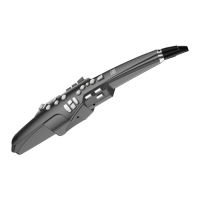
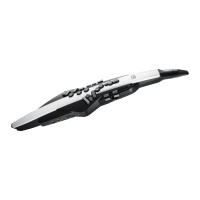
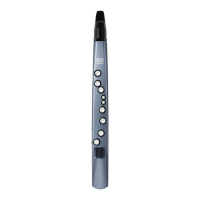
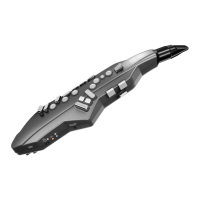
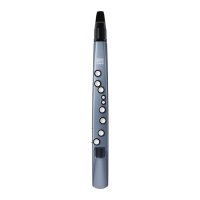
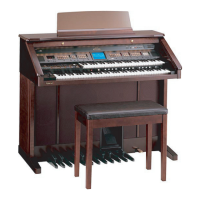
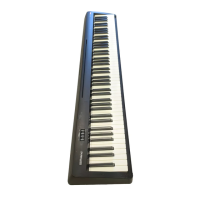
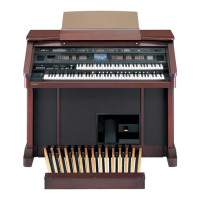
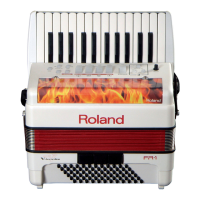
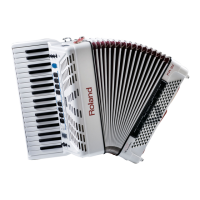
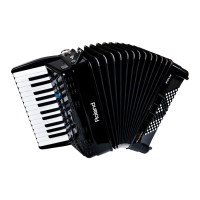
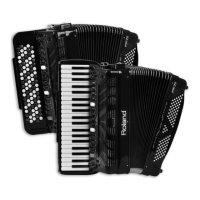
